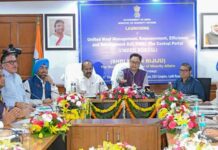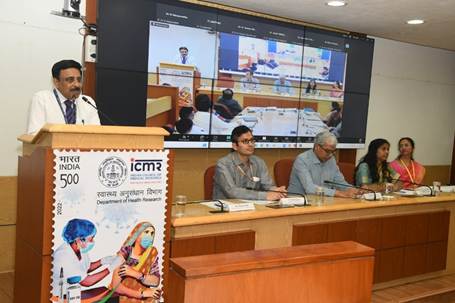APRIL 4:In a first-of-its-kind initiative, India is set to begin an ambitious, inter-ministerial scientific study aimed at detecting zoonotic diseases that could spill over from birds to humans, focusing on the critical intersection of human, bird, and forest health. The study entitled, “Building a surveillance model for detecting zoonotic spillover in increased bird-human interaction settings using the One Health approach: A study at selected bird sanctuaries and wetlands” was launched at the Indian Council of Medical Research Headquarters, here today. This unique study will be conducted in select bird sanctuaries and wetlands across Sikkim, Maharashtra and Tamil Nadu, leveraging the One Health approach to monitor the health of both human populations and migratory bird species, as well as the environment in which they coexist.
On the occasion, Dr. Rajiv Bahl, Director General, ICMR and Secretary, DHR said, “Just as a strong radar system is essential for timely and precise action, robust surveillance systems are critical for early detection and containment of emerging health threats. Scientific departments have a pivotal role in developing innovative tools and advancing research to strengthen these surveillance ‘radars’ which can be implemented in a programmatic manner. The National One Health Mission (NOHM) exemplifies the Government of India’s commitment to leveraging cutting-edge science in real-world settings to anticipate and mitigate public health risks. By embracing the One Health approach, we are shifting from reactive responses to proactive preparedness—an urgent global necessity.”
Dr. Ranjan Das, Director, National Centre for Disease Control (NCDC) said, “It is imperative to understand the mechanisms and drivers responsible for zoonotic spillovers, so that timely and coordinated actions can be taken. NCDC welcomes this vital initiative, which aligns with our national strategy to detect, prevent, and respond to zoonotic threats. Strengthening surveillance at the human-animal-environment interface will significantly enhance India’s preparedness for future outbreaks.”
Dr. Sangeeta Aggarwal, Scientist F, Office of the Principal Scientific Adviser to the Government of India said, “This is a pioneering example of inter-ministerial cooperation on scientific surveillance, essential for resilient health systems. Such collaborations are key to ensuring that our science translates into actionable policy.”
Mr Sunil Sharma, Assistant Inspector General of Forest, Ministry of Environment, Forest and Climate Change (MoEFCC) said, “This collaborative effort reinforces our commitment to conserving biodiversity while protecting communities from emerging health risks. Wildlife and ecosystem health are deeply intertwined with human well-being, and this study rightly addresses that balance. MoEFCC will provide continuous support for this and other initiatives of One Health.”
With India being a vital hub along the Central Asian migratory bird flyway, bird sanctuaries represent an interface where the risk of zoonotic transmission is heightened. Bird sanctuary workers, including rescue teams and veterinarians, are especially vulnerable due to their close proximity to wild and migratory birds. The interconnectedness of forest ecosystems, avian populations, and local human communities makes this an urgent area for surveillance. The study aims to develop a real-time surveillance model to detect and diagnose zoonotic diseases in bird sanctuary workers and nearby residents. It will involve periodic sampling of birds and environmental specimens to screen for emerging pathogens, utilizing advanced diagnostic tools like Next Generation Sequencing (NGS) for the early identification of novel infections.
This comprehensive research project, involving collaboration between multiple ministries, including the Ministry of Environment, Forest and Climate Change; Ministry of Health and Family Welfare and Ministry of Agriculture will establish India’s first early warning system for zoonotic spillovers, enhancing the country’s preparedness to respond to potential public health threats. By integrating wildlife health, environmental science, and human health, the study represents a critical step toward safeguarding both public and environmental health in India.




















